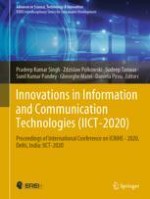This edited book is comprised of original research that focuses on technological advancements for effective teaching with an emphasis on learning outcomes, ICT trends in higher education, sustainable developments and digital ecosystem in education, management and industries. The contents of the book are classified as; (i) Emerging ICT Trends in Education, Management and Innovations (ii) Digital Technologies for advancements in education, management and IT (iii) Emerging Technologies for Industries and Education, and (iv) ICT Technologies for Intelligent Applications. The book represents a useful tool for academics, researchers, industry professionals and policymakers to share and learn about the latest teaching and learning practices supported by ICT. It also covers innovative concepts applied in education, management and industries using ICT tools.
